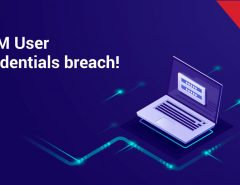Every network administrator knows that feeling. You receive an innocuous notification early in your billing cycle – “Exceeded quota”. Bad news. Your network has already exceeded the bandwidth allocated to it. The only option now is to buy extra bandwidth for the company, leading to higher costs which will reflect in the business’s bottom-line.
It’s a no-win situation for everyone involved. No business likes spending extra on bandwidth but there’s not a lot of choice in this situation as they need the additional bandwidth to continue smooth operations. But it doesn’t always have to be this way. With a bit of planning and some preparation, network administrators can take steps to prevent this kind of occurrence.
The causes of high bandwidth usage
The first step is identifying what are the sources of high bandwidth usage in your organization and exploring ways to limit it. Content-streaming websites like Netflix, YouTube and other similar websites can hugely affect the bandwidth ratio of your organization. These websites stream high-resolution video (or audio) on a continuous basis which can take up a lot of data. Preventing the usage of these kinds of websites could go a big way in this regard.
Another small but potentially big way in which bandwidth can be used is through the use of social media. While social media platforms may not be as data-intensive as video, the prevalent usage of these platforms can add up and lead to high usage. Facebook, Twitter and LinkedIn are growing more data-intensive by the day and can also lead to a loss in employee productivity. Organizations need to have a properly formulated policy in this regard.
In this day and age of cybersecurity threats knocking at our doors every day, it is important not to underestimate the threat malware possess. When a device is taken over by malicious malware, it is turned into a bot which can silently use up huge amounts of bandwidth, racking up massive bills. Add the increasing use of VoIP devices and application updates and you have enough sources to understand why your organization may be exceeding its allotted monthly bandwidth every month.
A unified security solution
Tackling all of these issues may not be possible with a single security measure and that is why businesses nowadays are increasingly looking towards multi-layered security strategies for strengthening their IT framework. Seqrite’s Unified Threat Management offers one such approach. UTM offers a highly simplified approach towards efficient security management, offering company administrators to monitor a host of security-related applications. It comes equipped with Intrusion Prevention Systems, antivirus modules, Virtual Private Networks (VPN), Next-Gen Firewall and Content Filtering Features.
In terms of optimizing bandwidth usage, UTM also offers useful features. The Load Balancing feature allows the distribution of bandwidth across multiple ISPs within the enterprise network and enables these ISPs to operate over the same gateway channels. URL Filtering allows the ability to block non-business related web traffic including streaming websites, downloads and instant messaging to reduce unnecessary usage while Bandwidth Manager allows allocation of enterprise bandwidth on the basis of individual or user groups. This allocation can be done on the basis of usage among groups, thus saving bandwidth costs.
Optimizing your organization’s bandwidth usage
There are tools within URL Filtering to create more specialized policies. Custom Web Lists can be created, with bandwidth limits for each profile/user. A time based access limit can be configured along with quota management and keyword block in http(s) traffic.
In fact, network administrators might consider blocking the following kind of websites, not just for bandwidth optimization reasons, but also because of the security angle:
- Inappropriate content
- Entertainment websites which offer streaming content
- Social Networking websites
- Untrusted websites which can contain Trojan horses or other malware
- Restricting available websites to increase organizational work efficiency
By exploring these features and setting the correct quota and controls, unrestrained usage of bandwidth can be greatly curbed allowing for greater costs and a more secure work environment.
As an IT security partner for your business, Seqrite provides comprehensive endpoint security from advanced cyber threats. To know more, visit our website or




